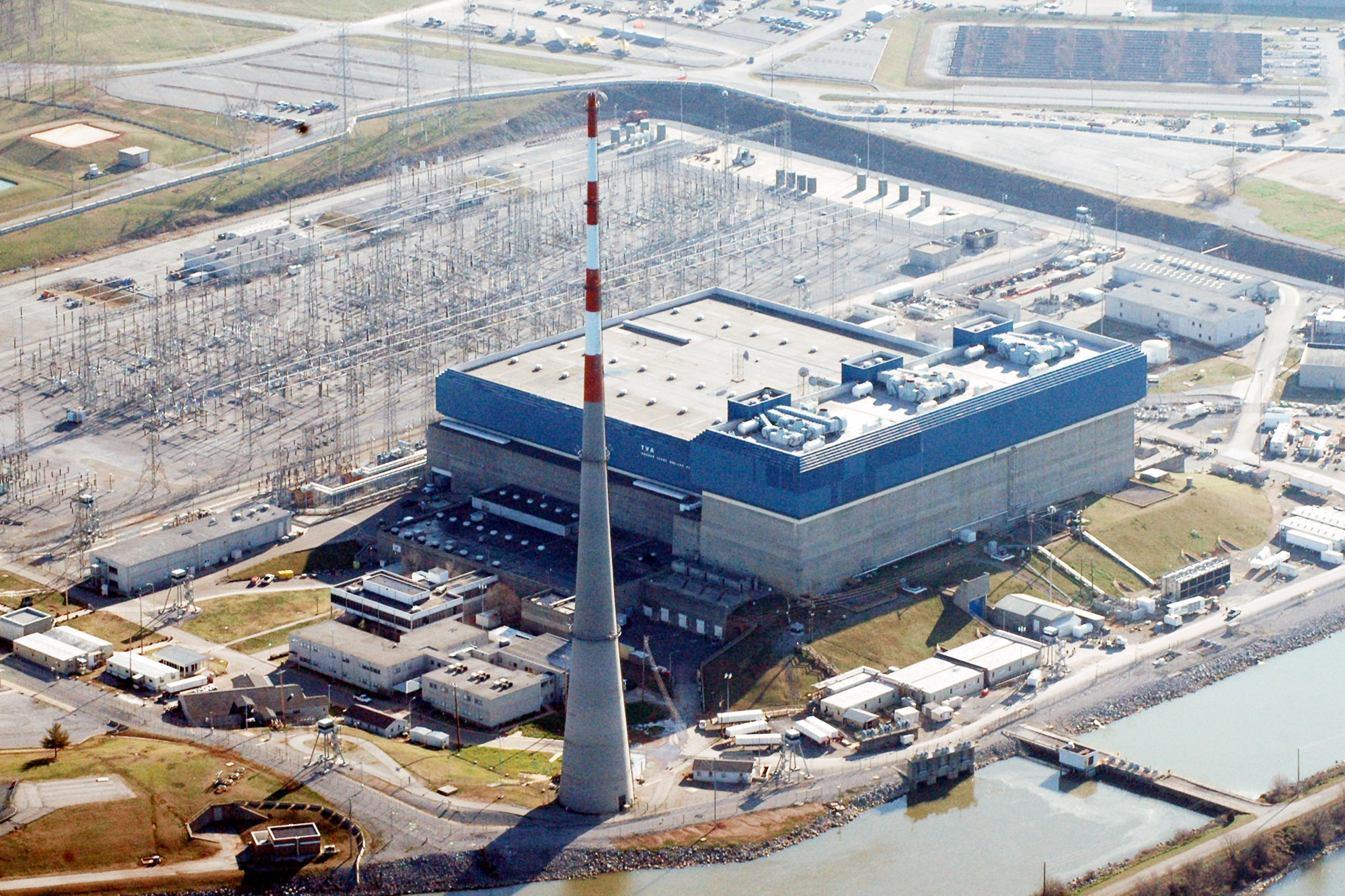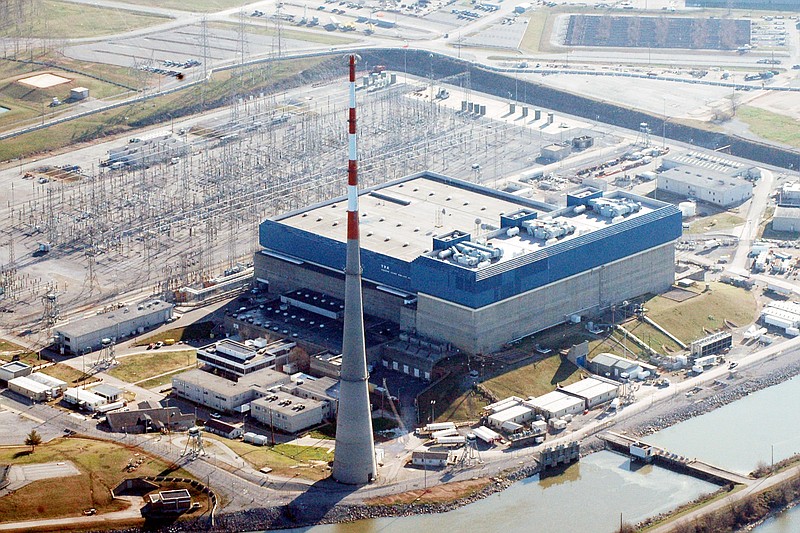 The Tennessee Valley Authority's Browns Ferry Nuclear Plant is located near Athens, Ala. Federal regulators ordered in-depth inspections of Browns Ferry on Tuesday after the U.S. Nuclear Regulatory Commission issued a rare red finding against the plant. The problem centers on a cooling system at the Browns Ferry Unit 1 reactor. Safety regulators said only five red findings - the most severe ranking the agency gives to problems uncovered in its inspections - have been issued nationwide in the past decade.
(AP Photo/Jay Reeves, File)
The Tennessee Valley Authority's Browns Ferry Nuclear Plant is located near Athens, Ala. Federal regulators ordered in-depth inspections of Browns Ferry on Tuesday after the U.S. Nuclear Regulatory Commission issued a rare red finding against the plant. The problem centers on a cooling system at the Browns Ferry Unit 1 reactor. Safety regulators said only five red findings - the most severe ranking the agency gives to problems uncovered in its inspections - have been issued nationwide in the past decade.
(AP Photo/Jay Reeves, File)Federal nuclear regulators Tuesday red-flagged last fall's failure of a low- pressure coolant valve at the Browns Ferry Nuclear Plant and have ordered increased inspections and oversight at TVA's oldest nuclear facility.
The "red, or high safety significance," finding - the most severe ranking the Nuclear Regulatory Commission gives to problems uncovered in its inspections - is only the fifth issued nationwide in the past decade, according to NRC spokesman Roger Hannah.
NRC already has two full-time inspectors at the plant, but the increased scrutiny will put a team there, Hannah said.
"It will be a very large team inspection: Maybe on the order of more than 12 inspectors over a period of several weeks. Other than during an event [crisis], this is probably the broadest kind of inspection we do," he said.
The Browns Ferry plant has three nuclear reactors near Athens, Ala., and is operated by the Tennessee Valley Authority about 100 miles southwest of Chattanooga.
Although TVA had argued in an early April regulatory conference that the failed valve was the result of defective manufacturing and would have opened in a few more moments to supply necessary cooling water, the NRC review disagreed and concluded that the violation was "red," or of high safety significance.
The plant is a similar design to the Fukushima Dai-ichi nuclear plant in Japan that was thrown into nuclear crisis after a 9.0 magnitude earthquake and tsunami left its six reactors without cooling water.
TVA's nuclear spokesman, Ray Golden, said TVA is reviewing NRC's findings, which could include appealing the decision.
"We thought we provided a compelling argument as to why the findings should be less than red," Golden said, adding that TVA had determined in lab tests since the failure that the valve would have opened "in two to seven minutes" longer.
On Oct. 23, the valve failed to open when operators shut down the Unit 1 reactor for refueling. TVA later determined that the last time the valve definitely had worked as required was on March 12, 2009.
Both Hannah and Golden said Tuesday that the public was not endangered when the valve failed because plant operators were able to use an alternative shutdown method.
The problem was a manufacturing defect, Golden said.
Hannah said NRC regulators understood that, but thought "the system is counted on for core cooling during certain accident scenarios and the valve failure left it inoperable, which potentially could have led to core damage had an accident involving a series of unlikely events occurred," Hannah said.
As part of the upcoming inspections, the NRC officials said federal regulators will review the plant's performance, its safety culture and its organization.
"The results of this inspection will aid the NRC in deciding whether additional regulatory actions are necessary to assure public health and safety," states an NRC letter to TVA signed by Victor McCree, the NRC's Region II administrator.
It won't be the first time Browns Ferry has been under increased NRC observation. The Browns Ferry plant is known in the industry as the site where a worker using a candle to check for air leaks in 1974 started a fire that disabled safety systems.
David Lochbaum, a Chattanooga nuclear engineer with the Union of Concerned Scientists, said the stuck valve could have presented a major problem under some circumstances - especially fire.
Lochbaum, who has worked both at Browns Ferry and as an instructor with the NRC, said that to comply with regulations crafted after the Browns Ferry fire, TVA had opted to protect one of the dual coolant pumping systems from a possible future fire.
"TVA hung its hat on [this system] surviving to provide cooling water to the reactor. But with this valve broken, and apparently broken for some time, the plant had no assurance of core cooling in event of a fire," he said.
"Sad at any plant; inexcusable at Browns Ferry," Lochbaum said.
Golden said TVA is "committed to safety at our plants."
"There were five different, redundant systems to keep the reactor cool, and at no time was the public or plant employees in danger," he said.
During the tornado outbreak in late April, almost all of TVA's power grid was damaged in Alabama and Mississippi, prompting an emergency shutdown of Browns Ferry. The shutdown systems operated normally, TVA officials said.
